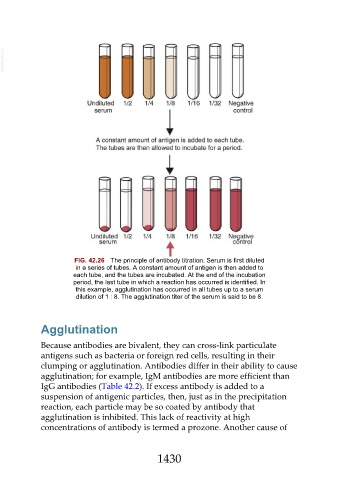Page 1430 - Veterinary Immunology, 10th Edition
P. 1430
VetBooks.ir
FIG. 42.26 The principle of antibody titration. Serum is first diluted
in a series of tubes. A constant amount of antigen is then added to
each tube, and the tubes are incubated. At the end of the incubation
period, the last tube in which a reaction has occurred is identified. In
this example, agglutination has occurred in all tubes up to a serum
dilution of 1 : 8. The agglutination titer of the serum is said to be 8.
Agglutination
Because antibodies are bivalent, they can cross-link particulate
antigens such as bacteria or foreign red cells, resulting in their
clumping or agglutination. Antibodies differ in their ability to cause
agglutination; for example, IgM antibodies are more efficient than
IgG antibodies (Table 42.2). If excess antibody is added to a
suspension of antigenic particles, then, just as in the precipitation
reaction, each particle may be so coated by antibody that
agglutination is inhibited. This lack of reactivity at high
concentrations of antibody is termed a prozone. Another cause of
1430

